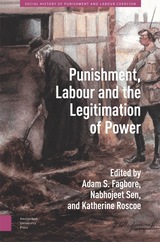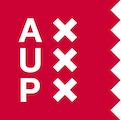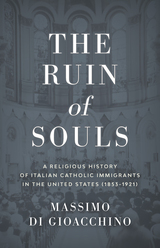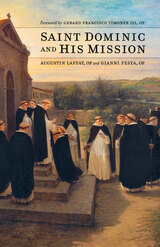3 books about Legitimation

Punishment, Labour and the Legitimation of Power
Adam Fagbore
Amsterdam University Press, 2025
This volume draws the outlines of a new field of scholarship at the crossroads of the social histories of punishment and labour. It poses key questions: What is “punishment” and how is it legitimized? In particular, how do punitive practices contribute to shape the processes of labour extraction and workers’ mobility? Based on empirically grounded research on a wide range of geographical and temporal contexts, this volume provides important insights on these questions and on the ways through which they can be studied. It highlights the need to pluralize both punishment and labour, moving beyond the standard focus on incarceration and wage labour. It invites to produce contextualized studies of the processes of coercion and the relations between multiple actors, rather than starting from predefined categories of labour and punishment. And it foregrounds the importance of the simultaneous analysis of processes of mobilization and immobilization of the workforce.
[more]

Social Science as Civic Discourse
Essays on the Invention, Legitimation, and Uses of Social Theory
Richard Harvey Brown
University of Chicago Press, 1989
Richard Harvey Brown's pioneering explorations in the philosophy of social science and the theory of rhetoric reach a culmination in Social Science as Civic Discourse. In his earlier works, he argued for a logic of discovery and explanation in social science by showing that science and art both depend on metaphoric thinking, and he has applied that logic to society as a narrative text in which significant action by moral agents is possible. This new work is at once a philosophical critique of social theory and a social-theoretical critique of politics. Brown proposes to redirect the language and the mission of the social sciences toward a new discourse for a humane civic practice.
[more]

The Visible World
Samuel van Hoogstraten's Art Theory and the Legitimation of Painting in the Dutch Golden Age
Thijs Weststeijn
Amsterdam University Press, 2008
How did painters and their public speak about art in Rembrandt’s age? This book about the writings of the painter-poet Samuel van Hoogstraten, one of Rembrandt’s pupils, examines a wide variety of themes from painting practice and theory from the Dutch Golden Age. It addresses the contested issue of ‘Dutch realism’ and its hidden symbolism, as well as Rembrandt’s concern with representing emotions in order to involve the spectator. Diverse aspects of imitation and illusion come to the fore, such as the theory behind sketchy or ‘rough’ brushwork and the active role played by the viewer’s imagination. Taking as its starting point discussions in Rembrandt’s studio, this unique study provides an ambitious overview of Dutch artists’ ideas on painting.
The Visible World was awarded the Jan van Gelder Prize in 2009.
“Thijs Weststeijn’s book … is destined to become one of the principal bibles for those who even remotely wish to read and understand Samuel van Hoogstraten’s thinking … written in clear, elegant language”, Jan Blanc in Simiolus 33/4 (2007-8).
“By asking purposeful questions about Dutch Baroque art theory and Van Hoogstraten’s place within it, Thijs Weststeijn has provided convincing and thoughtful answers, and made a most appreciated and masterful contribution to the field.” Amy Golahny in Sehepunkte 10 (2010), nr. 6.
“[Weststeijn] shows persuasively how Van Hoogstraten’s Inleyding is rooted in the tradition of classical rhetoric and philosophy … Chapters about aspects discussed in detail in the Inleyding, such as pictorial imitation, coloring and the depiction of emotion, reveal that Van Hoogstraten’s perspective on the theory of art was an idiosyncratic one … Weststeijn supposes at various moments in his book that Samuel van Hoogstraten wanted in particular to provide a legitimation for Rembrandt’s painting practice by writing down the ideas that he must have heard in the latter’s studio.” Bram de Klerck in NRC Handelsblad, 13 February 2009.
The Visible World was awarded the Jan van Gelder Prize in 2009.
“Thijs Weststeijn’s book … is destined to become one of the principal bibles for those who even remotely wish to read and understand Samuel van Hoogstraten’s thinking … written in clear, elegant language”, Jan Blanc in Simiolus 33/4 (2007-8).
“By asking purposeful questions about Dutch Baroque art theory and Van Hoogstraten’s place within it, Thijs Weststeijn has provided convincing and thoughtful answers, and made a most appreciated and masterful contribution to the field.” Amy Golahny in Sehepunkte 10 (2010), nr. 6.
“[Weststeijn] shows persuasively how Van Hoogstraten’s Inleyding is rooted in the tradition of classical rhetoric and philosophy … Chapters about aspects discussed in detail in the Inleyding, such as pictorial imitation, coloring and the depiction of emotion, reveal that Van Hoogstraten’s perspective on the theory of art was an idiosyncratic one … Weststeijn supposes at various moments in his book that Samuel van Hoogstraten wanted in particular to provide a legitimation for Rembrandt’s painting practice by writing down the ideas that he must have heard in the latter’s studio.” Bram de Klerck in NRC Handelsblad, 13 February 2009.
[more]
READERS
Browse our collection.
PUBLISHERS
See BiblioVault's publisher services.
STUDENT SERVICES
Files for college accessibility offices.
UChicago Accessibility Resources
home | accessibility | search | about | contact us
BiblioVault ® 2001 - 2025
The University of Chicago Press









